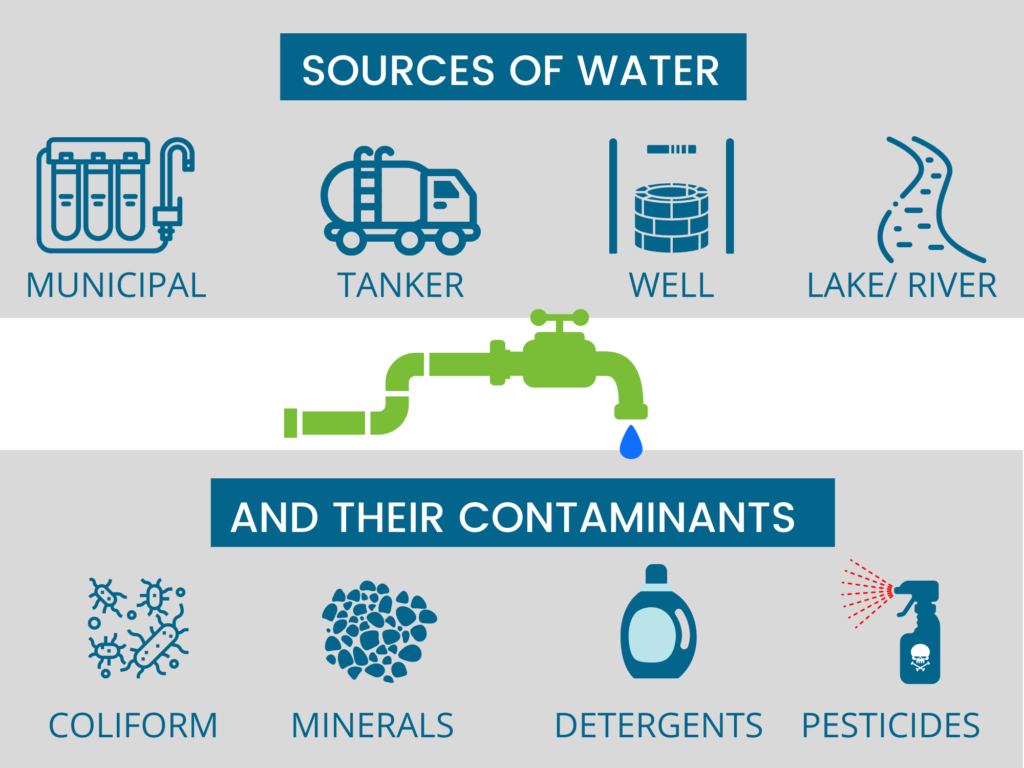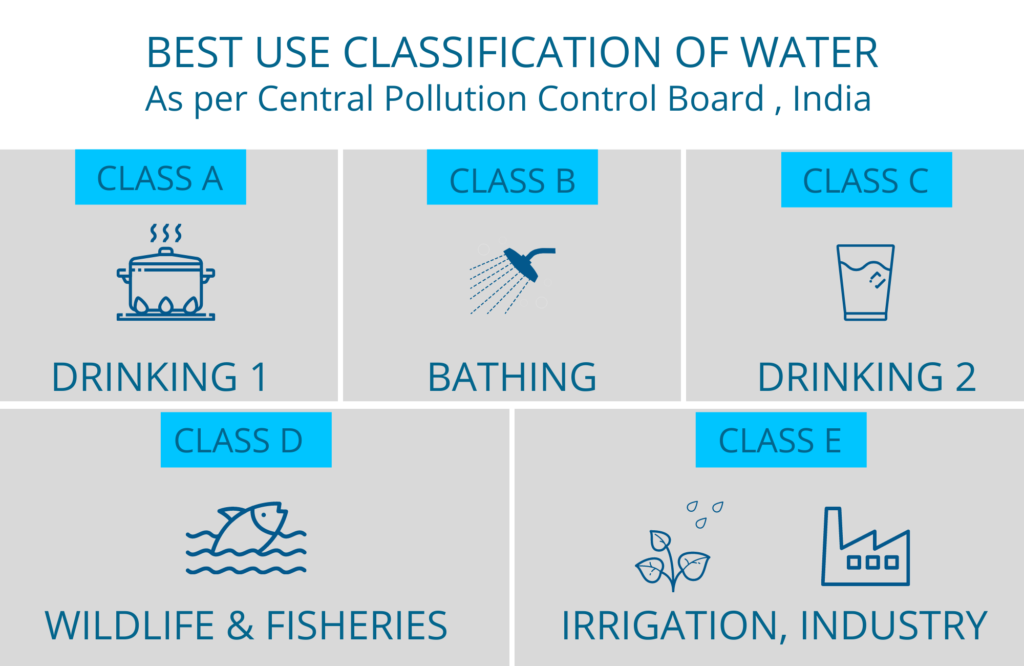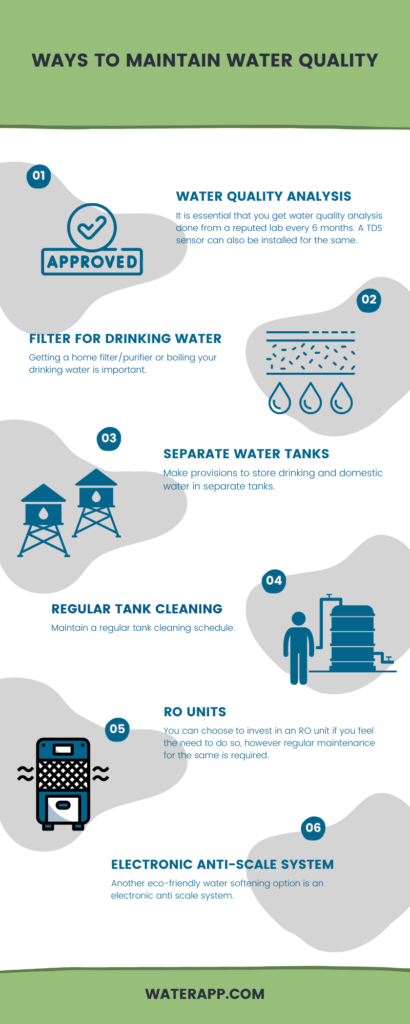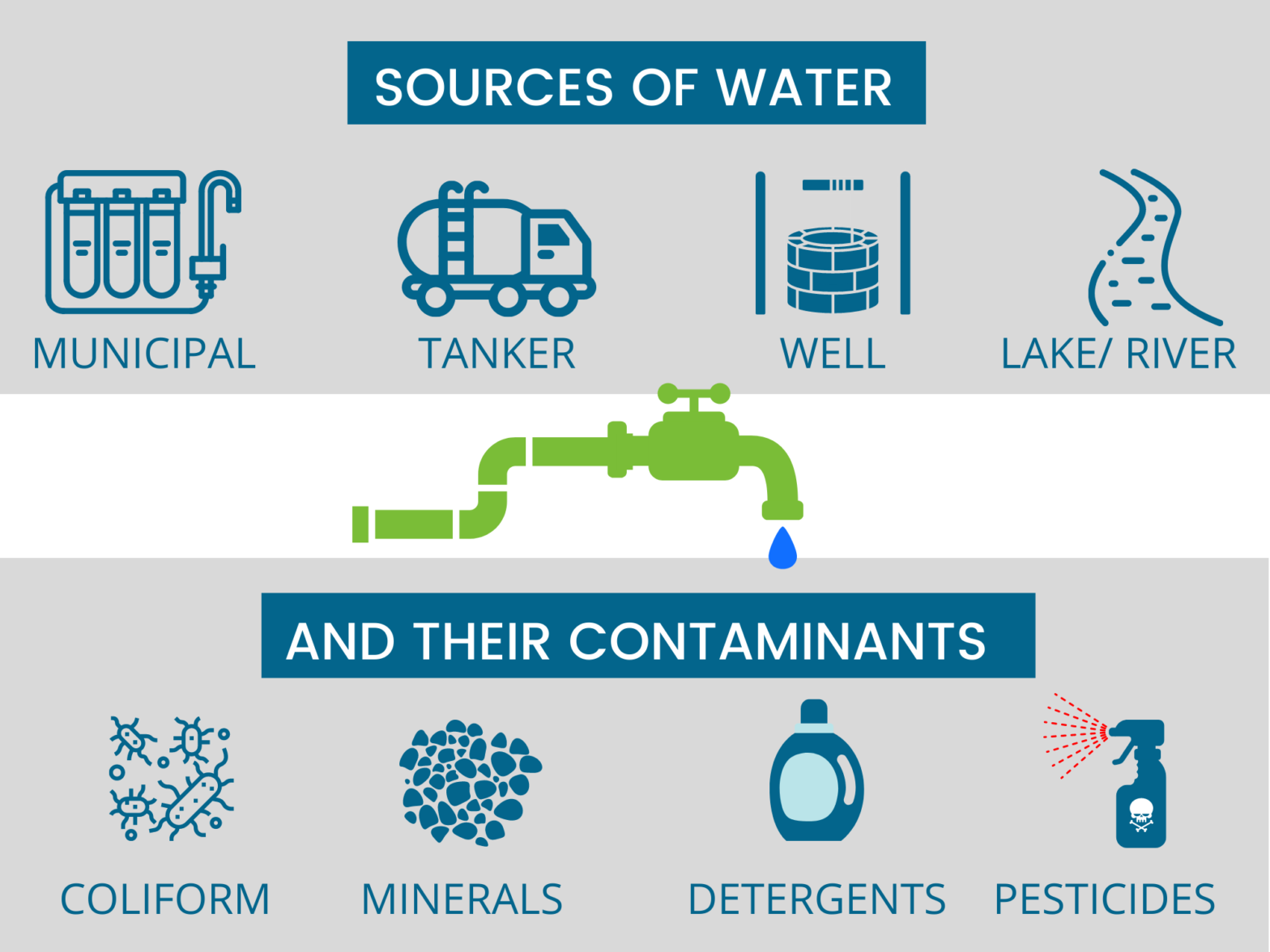Water Quality Determines Life Quality
Water comes from multiple sources. Its quality varies from place to place depending on the source of water and the treatment it receives. Typically, in the Indian metro cities, water supplied by the local municipal corporation is considered to be safe for drinking, cooking, bathing and washing. It goes through a thorough filtration, treatment and chlorination process before it reaches our doorstep.
Beyond this, most urban households use a water filter to filter the incoming water so that it is safe for drinking. However, for the purposes of bathing and washing, municipality supplied tap water is considered quite safe.
Sometimes, in those areas where the municipality supplied water is limited, the residents use it for drinking purposes only. They have to depend on bore water or tanker water for domestic use. In such cases, water quality is not known. Some of the well-to do residents/ housing societies have even installed water treatment plants on their site to treat this water.

What is “Safe Water”?
There is very little awareness or testing for water quality and most people are unaware if the water they use for drinking, cooking, bathing etc. is safe or not. Typically, the residential sector is familiar with equipment such as Water Level Sensor or controllers or water meters. These instruments help to measure the volume and level of water, however water quality instrumentation such as TDS meters or pH meters has not yet made inroads into the residential segment.
The parameters of what can be termed as “Safe Water” depend on how that water is going to be used.
For e.g. water that is used for drinking/ cooking needs to be absolutely devoid of bacteria and other microorganisms whereas water used for gardening needs to have a certain quantity of dissolved salts and minerals for best results.
In India, the Central Pollution Control Board (CPCB) has developed the concept of designated best use of water and the quality parameters permissible for that use. Five broad classes of water have been defined along with the acceptable water quality parameters for each class. Here is a list of the five classes of water, their designated best use and a brief description of the acceptable criteria.

| Class | Designated Best Use | Criteria |
| A | Drinking Water Source without conventional treatment but after disinfection | 1.Total Coliforms Organism MPN/100ml shall be 50 or less 2. pH between 6.5 and 8.5 3. Dissolved Oxygen 6mg/l or more 4. Biochemical Oxygen Demand 5 days 20 °C, 2mg/l or less |
| B | Outdoor bathing (Organized) | 1.Total Coliforms Organism MPN/100ml shall be 500 or less 2. pH between 6.5 and 8.5 3. Dissolved Oxygen 5mg/l or more 4. Biochemical Oxygen Demand 5 days 20 °C, 3mg/l or less |
| C | Drinking water source after conventional treatment and disinfection | 1. Total Coliforms Organism MPN/100ml shall be 5000 or less 2. pH between 6 and 9 3. Dissolved Oxygen 4mg/l or more 4. Biochemical Oxygen Demand 5 days 20 °C, 3mg/l or less |
| D | Propagation of Wildlife and Fisheries | 1. Total Coliforms Organism MPN/100ml shall be 5000 or less 2. pH between 6 and 9 3. Dissolved Oxygen 4mg/l or more 4. Biochemical Oxygen Demand 5 days 20 °C, 3mg/l or less |
| E | Irrigation, Industrial Cooling, Controlled Waste disposal | 1. pH between 6.0 and 8.5 2. Electrical Conductivity at 25 °C micro mhos/cm, maximum 2250 3. Sodium absorption Ratio Max. 26 4. Boron Max. 2mg/l |
| Below E | Not meeting any of the above criteria |
Further guidelines are available from the Indian Bureau of Standards for finer evaluation of water quality. For e.g., IS 10500 (2012) describes the Indian Standard specification for drinking water. It contains descriptions of characteristics such as acceptable color, odor, taste, pH value and turbidity of water. It specifies the substances that are undesirable in excessive amounts, toxic and radioactive substances and also sets permissible limits for pesticide residues and microbial load.

The six main indicators of water quality are: dissolved oxygen, turbidity, bioindicators, nitrates, pH scale, and water temperature.
pH is a measure of how acidic/basic water is. The range goes from 0 to 14, with 7 being neutral. pHs of less than 7 indicate acidity, whereas a pH of greater than 7 indicates a base. The pH of water is a very important measurement concerning water quality.
Bioindicators specify the permissible number of organisms such as coliforms and bacteria that are present in 100 ml of the water. For e.g., for class A type of water Total Coliforms Organism MPN/100ml shall be 50 or less while for class B type of water Total Coliforms Organism MPN/100ml shall be 500 or less. MPN is the most probable number.
Effects of Sub Par Water Quality
Slowly but surely people are becoming more and more aware of the importance of measuring water quality. We are seeing commercials of home water purifiers and similar equipment that tout their water as being bacteria free and pure.

The ill effects of consuming water that is of dubious quality are known to all. The effects can range from anywhere from having a stomach infection to organ failure. The effects of prolonged exposure to high amounts of toxic substances can be serious and life threatening. If you are not sure of the source of your drinking water, it’s best to get it tested every six months or so.
Hard water also causes a lot of damage to our skin and hair. Many people suffer from conditions such as dry skin and hair fall caused due to excessive hard water. In addition, hard water causes damage to plumbing equipment such as pipes, faucets and taps. It leaves white stains on tiles and flooring.
As water becomes more and more scarce, we may have to accept water coming from all available sources. In such situations, it is important to be fully aware of the quality of water we are using.
Download- Smart Water Management E-book
Ways To Maintain Water Quality
Here are some basic things suggested by WaterApp that housing societies/ residences can do to ensure they are using good quality water:
- If you are not sure of the source of your water, it is essential that you get water quality analysis done from a reputed lab every 6 months. This is extremely important for drinking water.
- In addition to installing water management equipment such as water level indicator and controllers, you can also install a TDS sensor so you know the quality of water you are using.
- Get a home water filter/ purifier unit for drinking water. If that is not possible, the traditional method of boiling water can be utilized.
- Make provisions to store drinking and domestic water in separate tanks.
- Maintain a regular tank cleaning schedule. If drinking and domestic tanks are separate, it reduces inconvenience and lends flexibility to the tank cleaning schedule as well.
- You can choose to invest in an RO unit if you feel the need to do so. Pls note that RO units need regular maintenance and also result in water wastage owing to the backwash.
- You can also opt for other eco-friendly water softening options such as an electronic anti scale system.
Water quality is a science inside of itself. In the above blog we have just covered some basic points that everyone needs to be aware of in their everyday life. In our next blog we will take a look at the water tanker market – how it works and how it can be improved.
Also read- Water Saving Tips for Housing Societies


